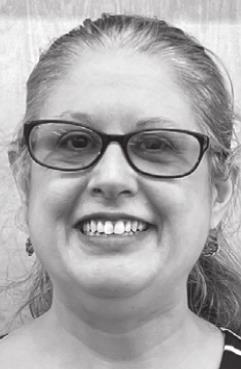
Answers to Go
SAN MARCOS PUBLIC LIBRARY
625 E. HOPKINS ST.
512-393-8200
Q. I heard of a place called “San Marcos de Neve.” What is this place?
A. In the early 1800s, Spanish rule of the Province of Texas was waning. According to the book, “Clear Springs and Limestone Ledges,” by Frances Stovall (p. 6), “Villa San Marcos de Neve was the last of the new towns settled in the name of the King of Spain.” Unfortunately, the village survived only a few years. It was beset with a series of disasters, including floods, failed crops and repeated attacks on livestock by native Americans.
Villa San Marcos was not settled in a haphazard fashion, but the outcome of the settlement was still disastrous. In 1807, the Governor of the Province of Texas under Spain was Antonio Cordero y Bustamante. He approved the founding of a settlement in Hays County near El Camino Real (the Royal Road, now known as Old San Antonio Road) and the San Marcos River with the idea that a settlement at this crossing would strengthen the Spanish position in the region. A historical marker 3.7 miles northeast of San Marcos on the old Bastrop Road memorializes the location of the settlement. Gov. Cordero assigned the task of establishing a colony to Don Felipe Roque de la Portilla. Portilla, along with his own family, brought 51 persons not from Louisiana or surrounding areas, as had been the case with previous settlements, but from the interior of Mexico to found San Marcos de Neve in April 1808. Titles were issued to 13 lots and homes were built, including a plaza. However, in June of that year, the San Marcos River flooded and the town was effectively washed away. Other hardships plagued the town. The native Americans were often friendly, but conflicts did arise. In August of 1808, it was reported that some of them took 15 head of cattle and nine head of the horses belonging to the settlers of San Marcos de Neve. Portilla requested assistance, but it did not come. The requested priest did not arrive, the defensive troops departed and a farm irrigation system was not installed. In 1809, new settlers arrived which brought the population to 81 – its height. However, this arrival did nothing to lessen the distress and poor living conditions. Portilla lost his health and fortune and was forced, in 1812, to return to Matamoros. Because he invested his own fortune in an effort to settle San Marcos de Neve, he is sometimes called the first “empresario” or “businessman” of Texas. Texans and Americans were unhurried in their settling of San Marcos and it wasn’t until after Texas was granted statehood by the United States that the area was firmly established.
The remains of San Marcos de Neve were discovered by archaeologists in October 1995 and were reported in the Austin American Stateman on April 26, 1996. The article by Mike Todd reported that, “The San Marcos de Neve settlement, described as near the San Marcos River about four miles east of downtown San Marcos, is the oldest non-Indian archeological site discovered in Hays County…Other Spanish colonial sites in Texas are missions, forts - all major settlements,” said retired University of Texas Archeologist Dee Ann Story. “But we do not have any examples of very small rural settlements. We don’t know much about these people, what their life was like.” State archaeologist at the time Nancy Adele Kenmotsu commented that, “It was in every sense of the word a frontier community, put there in an area next door to no-man’s land.” It was reported that archaeologists found about 30 pieces of ceramic material during their search. “There are very distinctive styles and techniques of manufacture,” she said. The ceramics confirmed the site is San Marcos de Neve.
Suzanne Sanders is the new columnist for the library. She is the Community Services Manager for the San Marcos Public Library and came from the Austin Public Library in 2015 after having served there as a librarian for over 20 years. She gratefully accepts your questions for this column.











